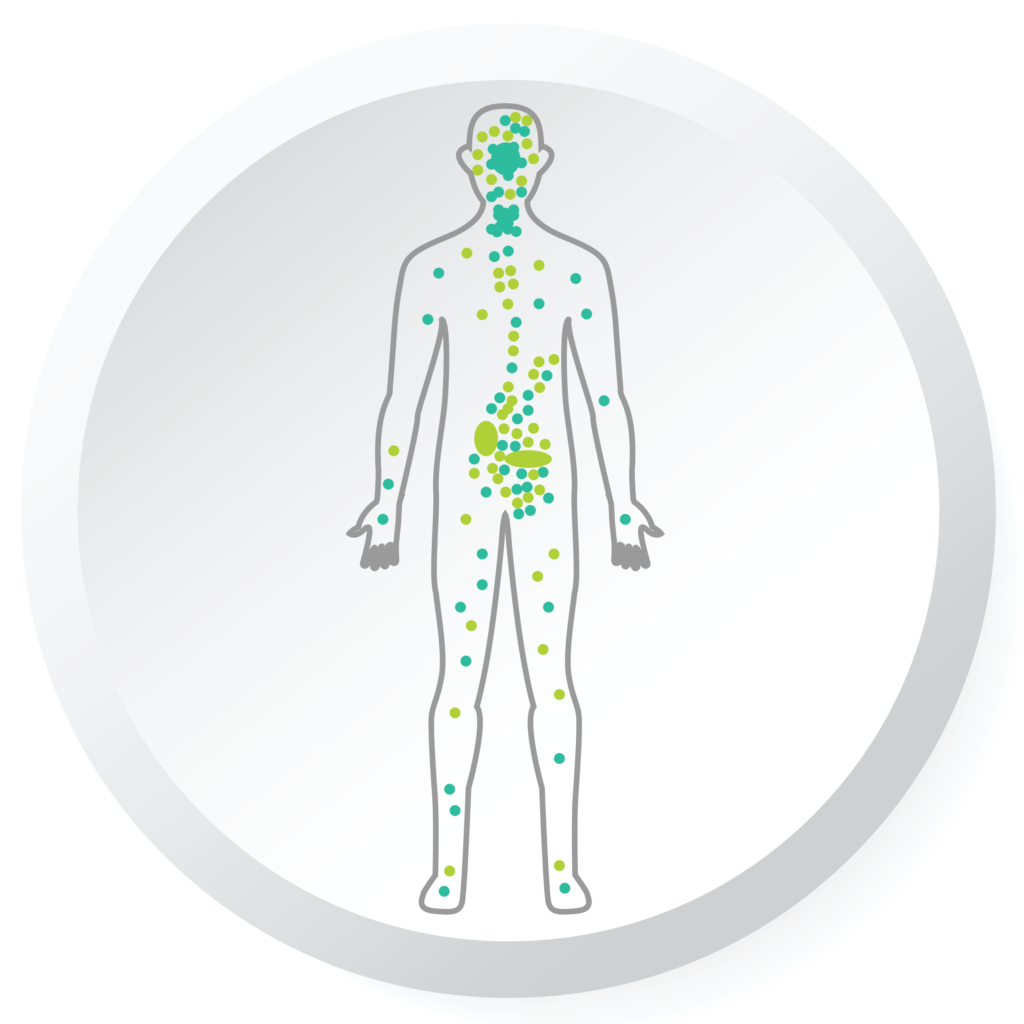What Is Homeostasis?
Homeostasis refers to the ability to keep a balanced internal state that functions optimally regardless of external conditions. All living things, including people, animals and plants, rely on this internal balance to maintain sound health and wellness.
The word “homeostasis” is derived from Greek origins of terms meaning “similar”(homoios) and “standing still”(stasis), loosely meaning “staying the same.”
You can think of homeostasis as balance, stability or equilibrium within a cell, a group of cells, or the entire body. It plays a role in the body’s ability to function properly and impacts our nervous, immune, digestive, respiratory, reproductive and urinary systems.
The term was coined by physiologist Walter Cannon in the 1920s after the idea of homeostasis was initially explained by physiologist Claude Bernard in the 1870s. Bernard maintained that complex living things must maintain “milieu interieur,” or balance of their internal environment, to live a “free and independent” life in the external world.
Why Is Homeostasis Important?
The body is a complex, connected network of various systems. Each individual system controls its own functions but is also interdependent with other systems, whether they seem related or not.
The breakdown of homeostasis in one system of the body can disrupt homeostasis in other systems, which can ultimately lead to negative health consequences. In order for the body to function properly, we want to aim for homeostasis throughout all of the systems.
Take the nervous system, for example, which is connected through pathways to many other parts of the body. This complex network consists of the central nervous system(the brain and spinal cord) and the peripheral nervous system(nerves outside the brain and spinal cord that connect to limbs and organs). Homeostasis of the nervous system is ideal for the control of many other voluntary and involuntary functions.
The endocrine system also benefits from maintaining homeostasis. This system comprises the glands that secrete hormones into the bloodstream. These hormones maintain homeostasis through their effect on energy production, inflammation, muscle metabolism, bone growth, blood pressure and more.
Homeostasis allows for a stable internal environment throughout all the systems of the body. Homeostatic processes are continuously taking place automatically. A disruption in this delicate balance can lead to a number of different health problems from digestive upset and headaches to more serious conditions such as diabetes, heart disease and cancer. The ability of the body to maintain homeostasis has a strong influence on maintaining overall health.
Understanding the ECS and Homeostasis
The endocannabinoid system (ECS) is known as a “master regulator” within the body. It’s responsible for regulating the biochemistry of several different bodily processes.
Research shows the the ECS can influence the following:
- Appetite
- Digestion
- Inflammation
- Immune response
- Pain
- Mood
- Memory
- Motor control
- Sleep
- Stress
- Bone health
- Muscle development
- Reproductive function
- Cardiovascular function
- Skin health
- Nerve function
With endocannabinoid receptors found nearly everywhere in the human body, the ECS helps maintain the delicate balance of these bodily processes. When any are thrown out of balance, the ECS can help bring the body back to a state of balance.
To better understand how the ECS helps maintain homeostasis, it’s important to know how this system works.
ECS Basics
Within the ECS, there are three main components—endocannabinoids, cannabinoid receptors, and enzymes.
Endocannabinoids
Endocannabinoids are made by the body and include anandamide (AEA) and 2-arachidonoylglycerol (2-AG). These endocannabinoids are chemically very similar to cannabinoids like CBD and THC, but they’re naturally created by the body.
Anandamide (AEA)
Anandamide is a neurotransmitter that has a very similar structure to THC and is named after the Sanskrit word ananda, which means “bliss, joy or happiness.” Anandamide has been referred to as the “bliss molecule” for the role it plays in producing a state of euphoria.
Anandamide influences several bodily functions including higher thought processes, memory, motivation, pain, regulation of body temperature, appetite, and fertility. It also contains anti-anxiety and anti-inflammatory effects because of its ability to increase neurogenesis.
2-Arachidonoylglycerol(2-AG)
2-AG is a member of a group of molecules derived from arachidonic acid, or two essential fatty acids (EFAs) known as EPA and DGLA. 2-AG is considered the most abundant endocannabinoid found in the body.
2-AG has very similar properties to anandamide and is known to play an integral role in pain management, appetite regulation, and immune system function. It is also important in modulating anxiety, depression, and addictive behaviors. 2-AG has also shown to play a role in the regulation of the invasion and multiplication of certain types of cancer cells.
These endocannabinoids are produced by the body as needed to maintain a state of homeostasis, helping to keep internal systems functioning as they should.
Cannabinoid Receptors and Homeostasis
Endocannabinoid receptors that are found throughout the entire body and are known as CB1 and CB2 receptors. They serve two major functions: They govern the effects of endocannabinoids AEA and 2-AG, and they regulate the behavioral effects of cannabis.
CB1 Receptors
CB1 receptors are primarily found in the brain and spinal cord. Areas of the brain shown to be abundant in CB1 receptors include the hippocampus, basal ganglia, cerebellum and limbic system. There is a particularly high density of CB1 receptors in the hippocampus and amygdala, which play a significant role in emotional regulation and memory. CB1 receptors are also found in the heart, lungs, kidneys, liver, uterus, and ovaries.
CB1 receptors affect functions such as cognition, memory, motor movements, and pain perception. They are also involved in the regulation of sleep, mood, and appetite. CB1 receptors are involved in dopaminergic, gamma-aminobutyric acid (GABA), glutamatergic, serotonergic, noradrenalin, and acetylcholine neurotransmitter systems.
CB2 Receptors
CB2 receptors are primarily found throughout the peripheral nervous system, with a high concentration found in the immune system, spleen, and gastrointestinal tract. There are also very small concentrations of CB2 receptors found in the brain.
CB2 receptors are heavily involved with immune functions such as inflammation and pain management. CB2 receptors are also involved in reward and addiction. This is because they play a role in modulating dopamine activity in the ventral tegmental brain area.
Endocannabinoids AEA and 2-AG can bind to both CB1 and CB2 receptors, with various effects.
Enzymes
The two enzymes found in the ECS are fatty acid amide hydrolase (FAAH) and monoacylglycerol acid lipase (MGL). These enzymes are responsible for breaking down endocannabinoids after they’ve completed their function.
Homeostasis and the ECS
The ECS works to maintain homeostasis through a complex balancing act that takes place between endocannabinoids and cannabinoid receptors. When imbalance is identified, the body releases endocannabinoids to target specific cannabinoid receptors. This creates a chemical response that helps return balance to the system that sounded the alarm.
You naturally create the endocannabinoids that help your body maintain homeostasis, but sometimes there aren’t enough endocannabinoids created naturally within the body for the ECS to function efficiently. This is referred to as clinical endocannabinoid deficiency, which is believed to be connected with a number of health concerns.
Cannabinoids and ECS Function
As we mentioned previously, the body’s endocannabinoids are very similar to cannabinoids like CBD and THC. Researchers believe that supplementing with such cannabinoids can help add to the body’s natural endocannabinoids and ultimately help promote a state of homeostasis within the ECS. This could explain why countless users have reported an array of benefits when adding cannabinoids like CBD and THC to their routines.
How exactly do these cannabinoids work within the ECS to contribute to a state of homeostasis? CBD and THC interact with cannabinoid receptors differently.
THC and the ECS
THC has a strong binding affinity on both CB1 and CB2 receptors. The CB1 is the main receptor that mediates the psychoactive effects of cannabis, and because THC binds directly to CB1 receptors, it sends signals to the brain that result in the effects marijuana is famous for. This binding affinity is also why THC can have a range of different effects on the body, from appetite to sleep and more.
CBD and the ECS
CBD, on the other hand, does not bind to CB1 or CB2 receptors. Instead, the effects of CBD are caused by two specific functions. CBD activates TRPV1 receptors(vanilloid receptor 1 or capsaicin receptors), which has many positive effects on well-being. Furthermore, CBD inhibits FAAH (fatty acid amide hydrolase), which can promote higher levels of the endocannabinoid anandamide.
Why is all this important? For something so complex, it’s really quite simple. It’s believed that using the cannabinoids found in cannabis and perhaps other plants could help support proper function of the ECS. This could mean improved homeostasis and levels of health. While more research is warranted in this regard, one thing is certain: the ECS plays a major role in keeping us happy and healthy.

